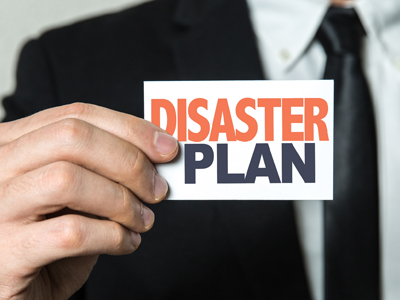There’s a big difference between cloud backup and Disaster Recovery as a Service (DRaaS), and it’s important to be clear on the distinction before you commit to either.
Cloud backup simply uses the cloud as a location to store a copy of your data. The cloud provider needs to be able to keep your files safe, secure, and available, but that’s the extent of their responsibility.
A DRaaS provider needs to provide support that not only makes your files available but also provides an environment to run them in, with adequate compute, storage, and network capacity to make them usable.
That means the scope of the DRaaS provider’s responsibility and the important of quality service is much greater than that of a cloud backup service. If you choose DRaaS, you need to ensure that your provider meets these needs:
- Protection against regional outages. If the disaster is limited to your data center, a DR site across the street is adequate. If the disaster’s impact is widespread, however, your DR site needs to be further away. Your DRaaS provider should offer multiple geographic regions to ensure you won’t be kept down by a widespread outage.
- Rapid recovery time. The DRaaS provider needs to offer a streamlined recovery process that enables your business to meet your recovery time objectives. Often overlooked is the ability to rapidly restore operations at your normal data center once the disaster is over. This can be particularly challenging with big data.
- Flexible recovery scope. Disasters come in all sizes. You may need to restore a virtual machine, a physical server, or a data file, and your DRaaS process shouldn’t require an entire data center to failover in order to recover a single failed server. But it needs to have the capability of running the entire data center in order to provide full protection when needed. Achieving this may mean backing up to an appliance in the data center as well as in the cloud and using the appliance to support recovery from small outages.
- Choice of recovery data. Sometimes you don’t want to recover from the last backup, which may be corrupted. Your DRaaS process needs to allow you to choose to recover from a specific point in time.
- Good performance when recovered. Will the DRaaS provide adequate performance for recovered applications? An application can technically be up and running while not being usable. Understand how your DRaaS provider guarantees performance and whether there are any restrictions that can affect your ability to operate, such as limits on how many applications you can run in your recovered environment.
- Ongoing partnership. Because your data center is constantly changing, your disaster recovery needs and your disaster recovery strategy need to be constantly updated, too. Your DRaaS provider shouldn’t walk away after you sign the contract; you need a continuing relationship with ongoing communication to ensure the DRaaS service will always be aligned with your requirements.
DRaaS from dcVAST goes beyond simply backing up your files to ensuring you have the capability of recovering from a crisis. Contact us to learn more about how to get beyond backup and implement a true disaster recovery capability.



